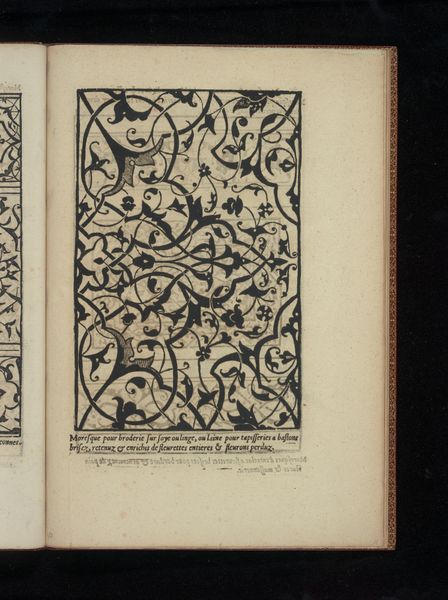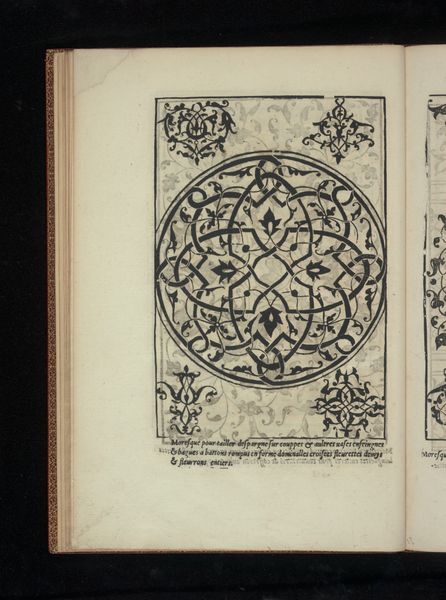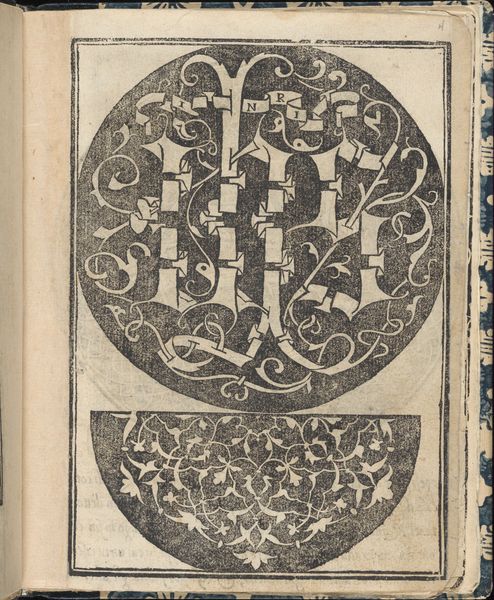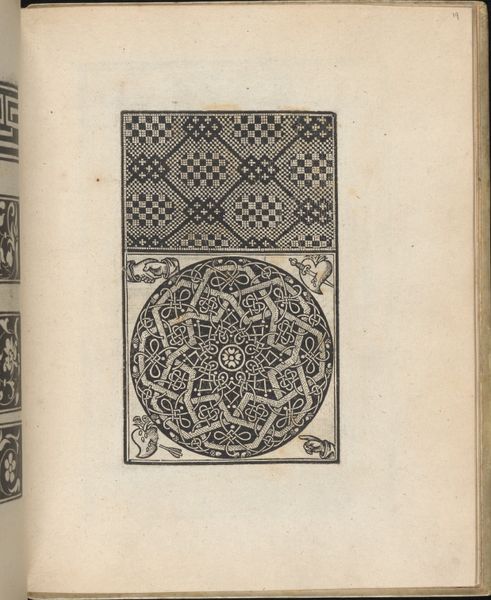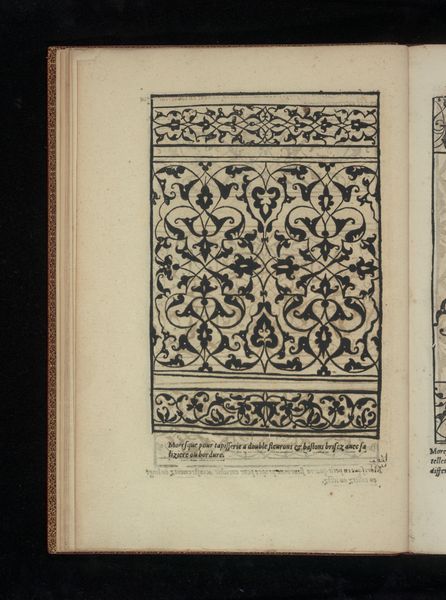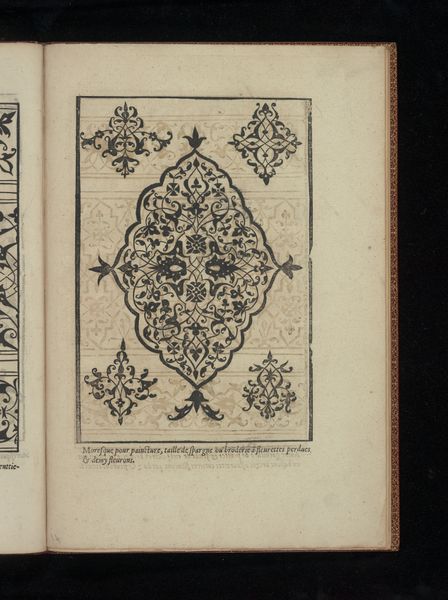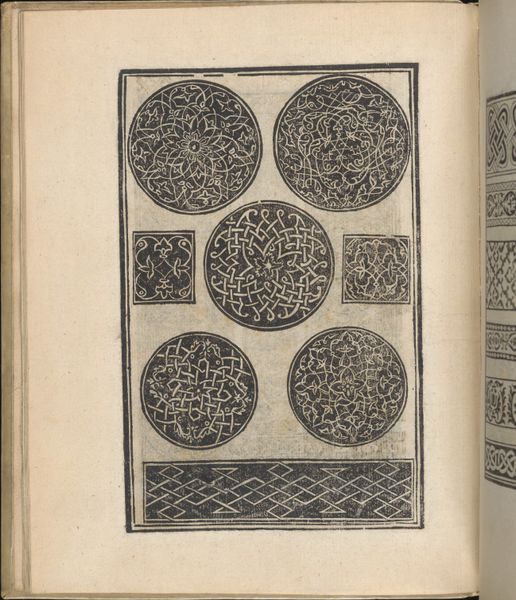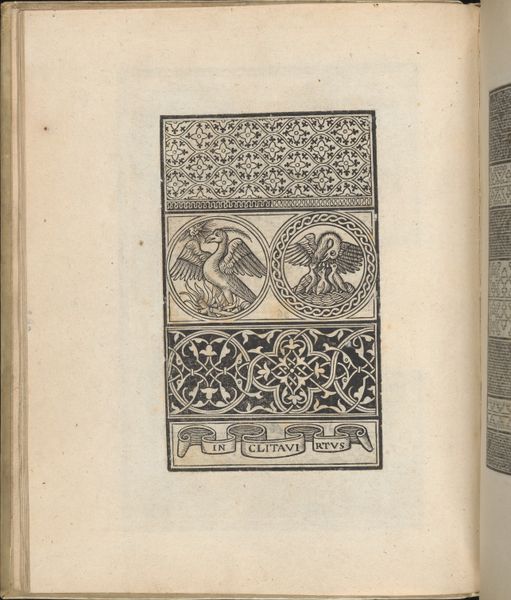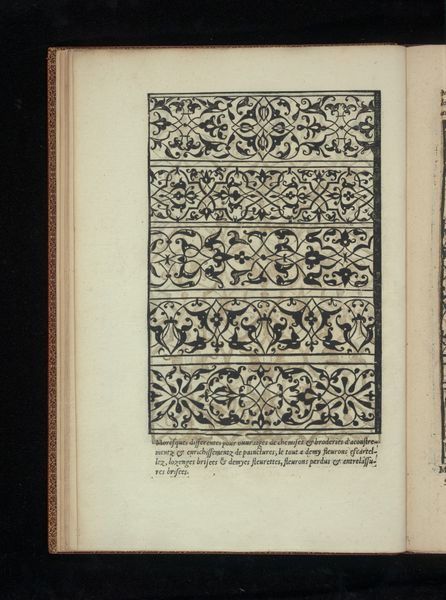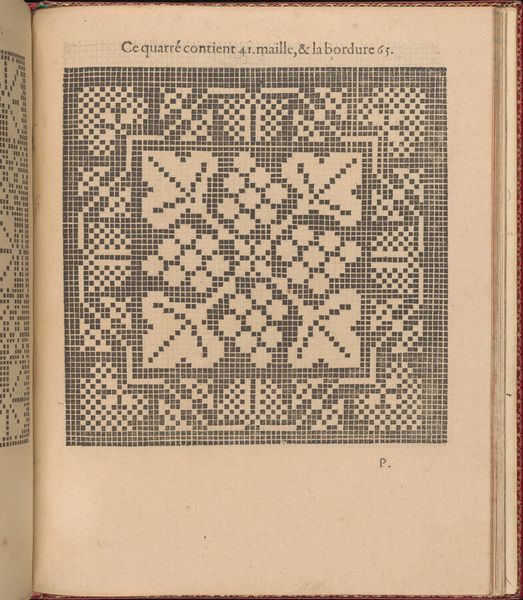
drawing, print
#
drawing
# print
#
geometric
#
line
#
islamic-art
Dimensions: Overall: 12 x 8 5/16 x 1/4 in. (30.5 x 21.1 x 0.7 cm)
Copyright: Public Domain
Curator: Welcome. We are observing a page from Francesco di Pellegrino’s Livre de Moresques, dating to 1546, which currently resides at The Metropolitan Museum of Art. This is the verso of page nine. Editor: Its stark black-and-white contrast gives it an air of precision. It feels quite self-contained. Curator: Indeed. Di Pellegrino's interest in geometric form is clearly manifested. Consider the concentric organization. A single motif is clearly intended to resonate. Its overall configuration is reminiscent of Islamic art. Editor: Considering its purpose, to offer designs for artisans working with metal and other materials, its neatness strikes me as especially crucial. Labor informs the meticulous designs. I envision craftspeople directly translating these patterns, perhaps using them for engraving, inlay, or embellishment. The visual object offered isn’t an end unto itself; it exists in tandem with its use value. Curator: Observe how the linework generates an interplay of positive and negative space. The linear framework emphasizes the tessellated arrangement of individual figures within a bounded region. I notice no central point—each vantage is afforded the same hierarchic prominence. This work demonstrates line technique within a broader framework that is not merely symbolic. The semiotics of geometrical abstraction create a pleasing image of pure pattern. Editor: The book, then, is a fascinating intersection between high artistic concepts and labor processes. It reveals an intrinsic linkage of craft production and market application. Curator: Precisely. The forms within the patterns may possess individual meaning; however, the true accomplishment lies in their overall organization. That systematic presentation is what remains resonant. Editor: And that articulation enables transformation across material constraints, shaping both form and societal practice. Thank you. Curator: Thank you.
Comments
No comments
Be the first to comment and join the conversation on the ultimate creative platform.
